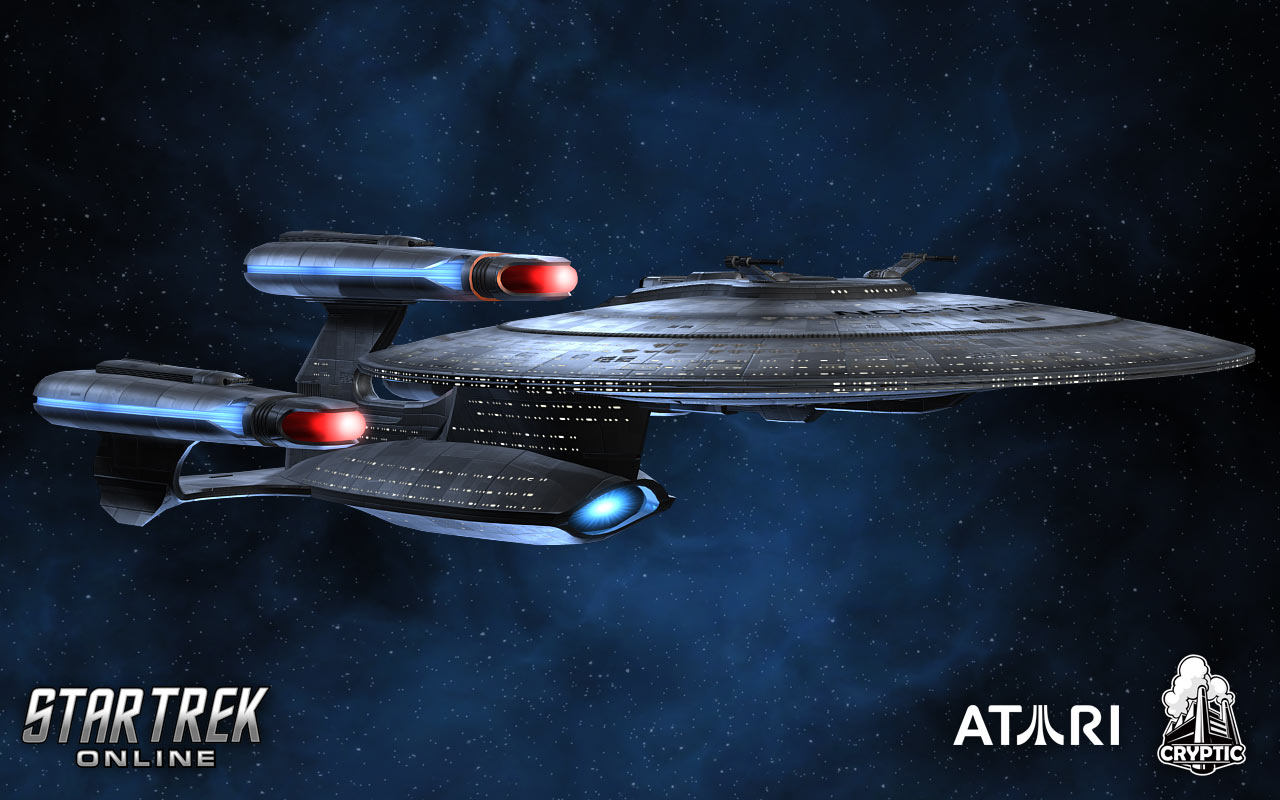It’s possible I’ve written about this on the blog before. Over the years, I’ve written about a great many things, and there’s some inevitable overlap.
Recently on a mailing list discussion turned toward the Star Trek: The Next Gernation films, and I mentioned in passing my opinions of Star Trek: First Contact (I really don’t enjoy it at all) and Star Trek: Insurrection (amiable enough for what it is) were outside of the mainstream. This led to discussion of the merits, or lack thereof, of the Next Generation films, and one person that that he “always considered ‘All Good Things’ to be the best Next Gen movie.”
It has some problems (the script is a little uneven, and some threads, like Tomalak, go absolutely nowhere), but in general I can endorse that viewpoint. “All Good Things…” really was a solid two hours of Star Trek: The Next Generation on an epic scale.
And, for at least a decade, I’ve thought that, in an alternate universe, “All Good Things…” was a movie movie. A better Star Trek: Generations than Star Trek: Generations. Yes, the pieces are there in the script that would have make it a good basis for a crossover between the generations.
I wrote this a couple of years ago on TrekBBS. I’m making light edits for clarity and readability…
The way I’ve imagined this hypothetical version of “All Good Things…,” the post-Star Trek VI stuff happens when the Enterprise-A is en route to Earth for its decommissioning.
Picard is more like Sam Beckett of Quantum Leap than the ghostly Janeway of “Flashback.” And Picard does have a role to play in the 23rd-century.
I also don’t see a “future” plotline, as that would crowd the story. Picard is aware that he’s moving into the future, probably the 25th-century with an Enterprise-H, but he doesn’t know exactly when and he can’t quite remember anything.
Things progress in the “present” as we saw in “All Good Things…”
In the past, however, things go very differently. The situation flares up in the Devron system. Kirk is ordered to respond, and Picard with his foreknowledge tries making suggestions as how to proceed. But Kirk, thinking of Picard as a lowly lieutenant, is content to ignore Picard and listen to Spock’s counsel. So, Picard goes to take matters into his own hands. Spock notices that Picard is up to no good, Kirk and Spock catch the drop on him, and Kirk is going to have Picard thrown in the brig for sabotage and mutiny. Picard realizes he has to tell them that he’s from the future, that he must violate the temporal Prime Directive. Picard tells them, but Kirk doesn’t believe him. Picard says that Spock knows him the future, that they’ve mind-melded, and that with a simply mind-touch Spock could verify who he is and what he knows. Spock is dubious, but performs the mind-meld, and sees in Picard’s mind the traces of their mind-meld in “Unification” and the veracity of Picard’s story. So, Picard isn’t thrown in the brig, and we proceed to the three ships in the temporal anomaly.
Here, I would raise the stakes. Not only is the fate of humanity in the balance, but the fate of the whole universe is at stake. In the past, the Excelsior arrives to provide back-up to the Enterprise. The three Enterprises (23rd-century, 24th-century, and 25th-century) enter the temporal anomaly to close it. But further in the future the anomaly is more powerful and more destructive than it is in the past, and the future Enterprise must withdraw. Then the Enterprise-D pulls out after shrinking the anomaly even further. It’s down to only the Enterprise-A.
Kirk is bound and determined to hold it together, but the ship won’t survive. The Excelsior closes in and begins beaming off all non-essential Enterprise personnel, evacuating the ship. We get down to the bridge, and Kirk knows that only one person is needed on the bridge to hold the ship together and close the anomaly. Spock says it’s only logical that he remain behind, but Kirk won’t have any of that. It’s the captain’s duty to remain with his ship. Spock is beamed away, and Kirk is alone on the bridge, at the helm, controlling the deflector blast into anomaly. The anomaly contracts too quickly, and the Enterprise-A is crushed. Kirk has saved the universe.
Kirk goes out on the bridge of his ship, the fate of the universe in the balance. A better end for Kirk, and a cooler story than fighting on monkey bars.
So, yes, a different story than “AGT,” though working from the same premise.
And a better Star Trek: Generations than Star Trek: Generations, in my not so humble opinion.
If only we lived in that alternate universe…

How I would have built a better Star Trek: Generations from “All Good Things…” http://t.co/UetdwTAow8
RT @allyngibson: How I would have built a better Star Trek: Generations from “All Good Things…” http://t.co/UetdwTAow8